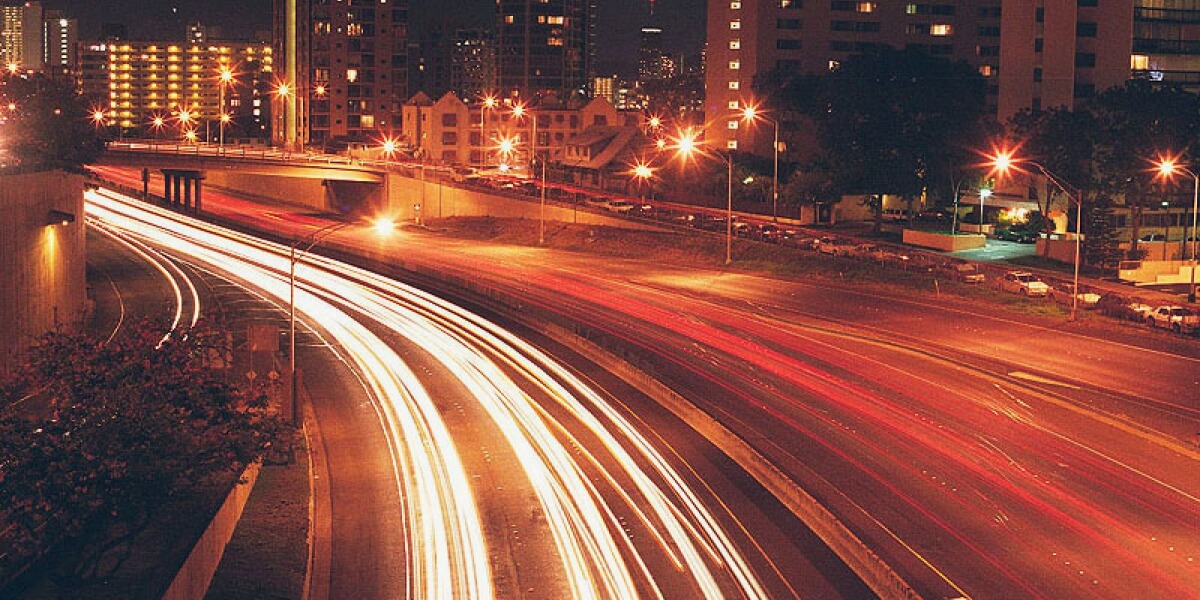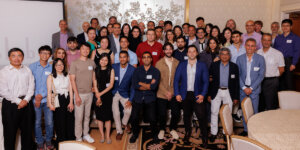
Americans spend about 104 hours per year in traffic. Photo courtesy of Christopher P. Becker.
Americans spend an average of 25.4 minutes commuting to work, according to U.S. Census Bureau data. For those who are counting, that amounts to 104 hours per year spent in traffic, with averages steadily rising every year. In Southern California, commutes are double the national average and considered the most stressful in the nation. The main culprit for these high numbers: congestion. The number of cars on highways increases annually, leading to more intense bottlenecks at interchanges, slower speeds on packed roads, and a higher frequency of accidents.
Engineers at USC Viterbi are hoping to reverse that trend by adding a new type of artificial intelligence to traffic speed forecasting technology, giving drivers adaptive and predictive information for the fastest commute in every probable way. Compared to state-of-the-art technology, their model’s predictions result in 12 to 15 percent fewer errors. This model was presented on April 30th at ICLR: the leading conference on artificial intelligence and neural network research.
Currently, popular navigation applications predict traffic through an auto-regressive model, which takes the average of historical data of a road or highway speeds and places that value as a prediction for how fast a car will be going during a commute at specific locations along that road. It then builds a route of the highest average speeds and presents it to the driver with directions.
That model is less likely to account for the changing dynamics from the road network caused by traffic accidents, road closures, special events, and construction. While navigation apps do input these variables in their routing technology based on real-time data, a discrepancy in processing that information still exists, making predictions less accurate.
To bridge this gap, Yaguang Li, a computer science Ph.D. candidate at the USC Viterbi School of Engineering, joined together with faculty to create an AI deep learning model called the Diffusion Convolutional Recurrent Network (DCRNN).
Li’s collaborators include professors Yan Liu, the Philip and Cayley MacDonald Endowed Early Career Chair and Cyrus Shahabi, the chair of USC Viterbi’s Department of Computer Science, and Rose Yu, a recent USC Viterbi Ph.D. graduate and now assistant professor at Northeastern.
The New Model
Unlike the prevalent auto-regressive model, DCRNN pulls from both historical and real time data to process and predict future speeds along a road. It also is able to confirm and optimize its predictions by analyzing real time data and increasing its accuracy through learning which methods predicted the right speeds. This means that the model gets smarter over time.
The model also learns various patterns that influence varying traffic speeds. It is able to capture the spatial dependency among adjacent roads and utilizes those speed changes for more accurate forecasting. Chance events such as accidents or closures are also accounted for in real-time, allowing the model to preemptively adjust the prediction promptly, giving drivers a clear picture of future road conditions.
“There are both temporal patterns and spatial patterns for which you have to account,” Shahabi said. “The sweet spot where traffic is light enough is always changing because the variables are changing.”
Shahabi explained that a congested freeway, such as the nefarious I-405, may not be congested when you’re leaving work and mapping your route on current navigation systems, but stacks up by the time you hit the road.
“Our model is able to predict what the conditions will be when you get there before you get there,” Shahabi said.
From traffic forecasting to the self-driving fleet
This model does not only help improve decision-making for people, but also autonomous vehicles.
The DCRNN model acts as a synthesizer of information that sends autonomous cars the answers to questions such as where to turn, based on its predictions. This allows the machine to exhibit an “anticipation” characteristic, much like a human driver would in keeping their eyes on the road.
But this model isn’t built to only fix traffic problems.
“In the future, it could be used to predict the movements of self-driving fleet and optimize transportation efficiency,” said Yu.
“To predict, we need to have enough data to teach the model what to look for.”
There are plenty of data sources for traffic speeds to optimize predictive models. These models can then be used for a variety of functions, including predicting movement or even emotion.
“We wanted to explore how AI uses this information to make decisions while also making people aware of the fact that there is this large data set,” said Yu. “It is all part of helping to build better decision-making services for every aspect of human life.”
Published on August 24th, 2018
Last updated on August 24th, 2018













